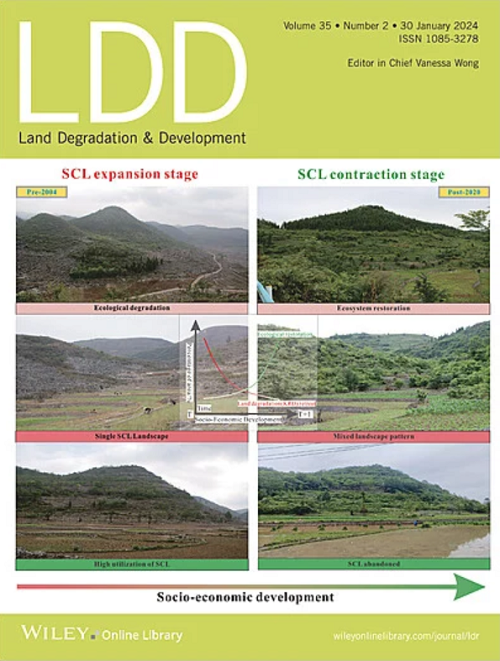Characteristics of Changes to POC and MAOC After Straw Returning in China: A Meta-Analysis
IF 3.6
2区 农林科学
Q2 ENVIRONMENTAL SCIENCES
引用次数: 0
Abstract
Straw returning is widely practiced in China to enhance soil organic carbon (SOC). However, how it affects SOC fractions—specifically, particulate organic carbon (POC) and mineral-associated organic carbon (MAOC) remains unclear. In this meta-analysis, we synthesized 792 paired observations to assess the impacts of straw returning on SOC fractions across diverse climatic conditions, soil properties, and agronomic practices in China. The results showed that straw returning significantly increased SOC, with a larger contribution from POC than MAOC. The enhancement of POC decreased with rising mean annual temperature (MAT) and mean annual precipitation (MAP), while MAOC increased under these same conditions. Higher quantities of straw input led to greater increases in POC and MAOC. Conventional tillage had a more favorable effect on SOC, POC, and MAOC than no-tillage systems when combined with straw returning. The most substantial improvements were observed with straw returning durations between 5 and 10 years. Soils with neutral and high C/N ratios exhibited greater potential for carbon sequestration. Furthermore, optimal application rates of nitrogen (100–240 kg ha−1 year−1), phosphorus (110–200 kg ha−1 year−1), and potassium (80–160 kg ha−1 year−1) fertilizers maximized POC accumulation by promoting aboveground biomass and enhancing soil aggregate formation. This study provides new insights into how well-managed straw returning can improve the stabilization and functioning of soil organic carbon pools, offering a scientific foundation for developing regional straw management strategies.中国秸秆还田后POC和MAOC变化特征:meta分析
秸秆还田是中国广泛采用的提高土壤有机碳(SOC)的方法。然而,它如何影响有机碳组分,特别是颗粒有机碳(POC)和矿物相关有机碳(MAOC)仍不清楚。在这项荟萃分析中,我们综合了792个配对观测值,以评估秸秆还田对中国不同气候条件、土壤性质和农艺措施下土壤有机碳含量的影响。结果表明,秸秆还田显著增加了土壤有机碳,其中POC的贡献大于MAOC。在相同条件下,POC的增强随年平均温度(MAT)和年平均降水(MAP)的升高而减弱,而MAOC则增加。秸秆投入量越大,POC和MAOC的增加幅度越大。常规耕作与秸秆还田对土壤有机碳、POC和MAOC的影响均优于免耕。秸秆还田时间在5至10年之间,观察到最显著的改善。中性和高碳氮比土壤具有更大的固碳潜力。此外,氮肥(100-240 kg ha−1年−1)、磷肥(110-200 kg ha−1年−1)和钾肥(80-160 kg ha−1年−1)的最佳施用量通过促进地上生物量和促进土壤团聚体的形成,使POC积累最大化。本研究为合理管理秸秆还田提高土壤有机碳库稳定性和功能提供了新的视角,为制定区域秸秆管理策略提供了科学依据。
本文章由计算机程序翻译,如有差异,请以英文原文为准。
求助全文
约1分钟内获得全文
求助全文
来源期刊

Land Degradation & Development
农林科学-环境科学
CiteScore
7.70
自引率
8.50%
发文量
379
审稿时长
5.5 months
期刊介绍:
Land Degradation & Development is an international journal which seeks to promote rational study of the recognition, monitoring, control and rehabilitation of degradation in terrestrial environments. The journal focuses on:
- what land degradation is;
- what causes land degradation;
- the impacts of land degradation
- the scale of land degradation;
- the history, current status or future trends of land degradation;
- avoidance, mitigation and control of land degradation;
- remedial actions to rehabilitate or restore degraded land;
- sustainable land management.
 求助内容:
求助内容: 应助结果提醒方式:
应助结果提醒方式:


